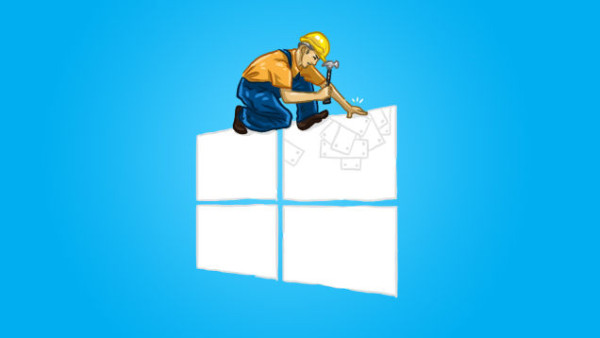

I’m one of the few big fans of Windows 8 myself but I hated Charms. I simply found it useless. I do a lot of stuff on my PC both home and at the office and can live without the Start Menu. I found Windows 8’s live tiles and Metro (let’s call it Metro for simplicity) interface to be fresh. I remained productive because I knew where everything is, because I played with the tiles and made a mosaic of my most used apps and system programs. Doing so, the tile arranging thing, was quite fun. Frankly, I find seeing grids upon grids of icons in Windows, iOS and Android to be dated. The tiles were fresh. I even dress my Android phones with a Windows Phone style home screen. I also anticipated the importance of touch in the new operating system so I bought a touch-screen laptop when I needed a new one. They really work well together.
But not everyone feels the same way. Change, despite being a universal constant is still a tough pill to swallow for most of us. Problem is, Microsoft made many users swallow a pill the size of a zucchini. The change in the interface was radical. The expected user base was mostly non-touch based and Windows 8 was practically fifty percent dependent on touch. The overall flatness of the Metro/Modern interface was not welcome to those who loved the eye candy brought by Aero. People felt off guard at the abrupt switching between legacy apps, full-screen modern apps and the Start Screen. And again, the glaring loss of the Start Menu. Windows 8 even gave Linux, Mac and Chrome fans the opportunity to evangelize their systems if Windows users were forced to change the way they work anyway.
Now we have Windows 10. To truly distance itself from the weird redheaded cousin 8, this new Windows skipped a version. Windows 8.1 basically became Windows 9. So has Windows 10 fixed the problems introduced by Windows 8?
- Foremost, Windows 10 brought back the Start Menu (sort of). It mixes the Windows 7 style Start Menu and Metro’s tile interface together. Metro/Modern or Universal apps still hold much promise and putting the OS in tablet mode will still make the tile and modern interface shine.
- Gone is the abrupt screen shift when opening the Start Screen and any modern app which takes up the whole screen. The new Start Menu won’t take up the entire screen unless real Windows 8 fans allow it. Gone is the anxiety of losing work because the screen gets hidden behind the Start Screen or a modern app.
- Shutting down the system or logging off should be easier since the shutdown controls are somewhat near where it used to be. Windows 8 made shutting down a bit confusing because they made people shut down the system the old fashioned way; through the hardware button. People got used to shutting down or logging off through the Start Menu. Many folks I know who tried Windows 8 kept asking me how to shut down the system. Of course I got the heads up since I participated in the preview phase.
- Modern apps no longer take up the whole screen. They start out in medium-sized windows which the user can resize. Closing an app is also as easy as clicking the X button at the top right corner of its window unlike before. Modern apps now behave like other legacy or desktop apps in desktop mode. They return to their full-screen behavior in tablet mode. Also, their settings can be summoned in the app itself unlike before, the setting for all modern apps, can be summoned through the Charms settings button. It was also a confusing thing to learn for casual Windows XP or Windows 7 users.
- The OS no longer takes up much resources. It can work on computers as old as seven years old as long as it can run Windows 7 Professional smoothly. But Microsoft gave us this fix since Windows 8 and is carried over to Windows 10.
- Windows 10 also brought back the most casual of casual games, which is Solitaire. Windows 8 users had to download Solitaire from the Store and those who had no access to the store or any built in games had to endure excruciating boredom. Solitaire is now new and improved. Microsoft fixes boredom on a whole new level by putting Candy Crush and Minecraft into the mix. What’s missing now is an updated 3D Space Cadet Pinball.
- Microsoft also sat back and listened to many pained users, played a shrink and took out the schizophrenia in Windows 8. Windows 10 now behaves like a tablet on tablets and hybrids when taken off keyboards ad as desktops on desktop systems.
- Now to make Windows 10 more of a new version than a Windows XP Service Pack 2, Microsoft included Cortana which is fun to use and to talk to, a new Edge Browser (though Spartan sounds ten times better), made improvements to calculator, wordpad, mail and groove music. The new Action Center also centralizes notifications as well as includes quick settings for connections, brightness and toggling between normal and tablet mode.
Many are now enthusiastically clicking their Get Windows 10 icons to move away from Windows 8.1. Many are also switching away from Windows 7 to enjoy the speed and additional features of Windows 10 or just to take advantage of the free upgrade to buy time from obsolescence.
So has Microsoft really fixed Windows? It has for the most part in places that matter but there’s still a lot of work to do. As they said, Windows 10 is still a work in progress. Just don’t fix what’s not broken.

